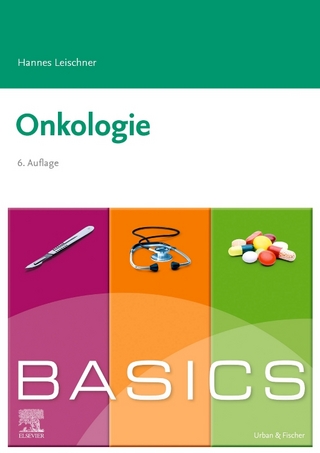
Hyaluronan in Cancer Biology
Academic Press Inc (Verlag)
978-0-12-374178-3 (ISBN)
Hyaluronan biology is being recognized as an important regulator of cancer progression. Paradoxically, both hyaluronan (HA) and hyaluronidases, the enzymes that eliminate HA, have also been correlated with cancer progression. Hyaluronan, a long-chain polymer of the extracellular matrix, opens up tissue spaces through which cancer cells move and metastasize. It also confers motility upon cells through interactions of cell-surface HA with the cytoskeleton. Embryonic cells in the process of movement and proliferation use the same strategy. It is an example of how cancer cells have commandeered normal cellular processes for their own survival and spread. There are also parallels between cancer and wound healing, cancer occasionally being defined as a wound that does not heal.
The growing body of literature regarding this topic has recently progressed from describing the association of hyaluronan and hyaluronidase expression associated with different cancers, to understanding the mechanisms that drive tumor cell activation, proliferation, drug resistance, etc. No one source, however, discusses hyaluronan synthesis and catabolism, as well as the factors that regulate the balance. This book will offer a comprehensive summary and cutting-edge insight into Hyaluronan biology, the role of the HA receptors, the hyaluronidase enzymes that degrade HA, as well as HA synthesis enzymes and their relationship to cancer.
Robert Stern, MD, is Emeritus Professor, Department of Pathology, School of Medicine, University of California, San Francisco. Robert Stern left Germany in 1938 for Seattle, Washington. He graduated from Harvard College in 1957, and obtained the M.D. degree from the University of Washington (Seattle) in 1962, followed by a rotating internship at King County Hospital (Seattle). While a medical student, he worked in the laboratories of Drs. Krebs and Fisher, who became Nobel laureates. He received his resident training in Anatomic Pathology at the NCI, and was a research scientist at the NIH for 10 years. Since 1977, he has been a member of the Pathology Department at the University of California, San Francisco. He is a board-certified Anatomic Pathologist, participating in the research, teaching, administrative, and diagnostic activities of the Department. He directed the Ph.D. program in Experimental Pathology for ten years. For the past decade, his research has focused on hyaluronan and the hyaluronidases, an outgrowth of an interest in malignancies of connective tissue, stromal-epithelial interactions in cancer, and biology of the tumor extracellular matrix. His laboratory was the first to identify the family of six hyaluronidase sequences in the human genome. These enzymes were then sequenced, expressed, and characterized in his laboratory. Subsequent work has identified a catabolic pathway for hyaluronan.
Preface: Hyaluronan and Cancer
Robert Stern
Section I: Historical Overview
1.Association between “acid mucopolysaccharides and malignancy: an old
concept comes of age, finally
Robert Stern
Section II: Cell Biology of Hyaluronan in Cancer
2.Hyaluronan: a constitutive regulator of chemoresistance and malignancy in cancer cells
Mark G. Slomiany and Bryan P. Toole
3.Growth factor regulation of hyaluronan deposition in malignancies
Paraskevi Heldin, Eugenia Karousou, and Spyros S. Skandalis
4.HYALURONAN BINDING PROTEIN 1 (HABP1) IN CANCER BIOLOGY
Kasturi Datta
Section III: Hyaluronan Receptors and Signal Transduction Pathways
5.CD44 meets merlin and ezrin: Their interplay mediates the pro-tumor activity of CD44 and tumor-suppressing effect of merlin
Ivan Stamenkovic and Qin Yu
6.Hyaluronan-mediated CD44 interaction with receptor and non-receptor kinases promotes oncogenic signaling, cytoskeleton activation and tumor progression
Lilly Y.W. Bourguignon
7.Adhesion and penetration: two sides of CD44 signal transduction cascades in the context of cancer cell metastasis
David J.J. Waugh, Ashleigh McClatchey, Nicola Montgomery, and Suzanne McFarlane
8.INVOLVEMENT OF CD44, A MOLECULE WITH A THOUSAND FACES, IN CANCER DISSEMINATION
David Naor, Shulamit B. Wallach-Dayan, Muayad A. Zahalka, and Ronit Vogt Sionov
9.Rhamm/Hmmr: an intinerant and multifunctional hyaluronan binding protein that modifies CD44 signaling and mitotic spindle formation.
James B. McCarthy and Eva A. Turley
Section IV: Hyaluronan Synthesis
10.Altered hyaluronan biosynthesis in cancer progression
Naoki Itano and Koji Kimata
Section V: Hyaluronan Degradation, the Hyaluronidases, and the Products of Degradation
11.HYALURONDIASE: BOTH A TUMOR PROMOTER AND SUPPRESSOR
Vinata B. Lokeshwar and Marie G. Selzer
12.The hyaluronidases in cancer biology
Robert Stern
13.Hyaluronan fragments: informational polymers commandeered by cancers
Kazuki N. Sugahara
Section VI : Hyaluronan in Cancer Epithelial-Stromal Interactions
14.Hyaluronan in human tumors: importance of stromal and cancer cell-associated hyaluronan
Raija H. Tammi , Anne H. Kultti, Veli-Matti Kosma, Risto Pirinen, Päivi Auvinen, and Markku I. Tammi
15.THE ONCOFETAL PARADIGM REVISITED: MSF AND HA AS CONTEXTUAL DRIVERS OF CANCER PROGRESSION
Seth L. Schor, Ana M. Schor, Ian R. Ellis, Sarah J. Jones, Margaret Florence, Jacqueline Cox, and Anne-Marie Woolston
Section VII: Hyaluronan and Individual Cancers
16.Hyaluronan synthesis and turnover in prostate cancer
Melanie A. Simpson
17.Role of hyaluronan in melanoma progression
Carl Gebhardt, Marco Averbeck, Ulf Anderegg, and Jan C. Simon
18.Role of Hyaluronan metabolism in the initiation, invasion and metastasis of Breast cancer
Tracey J. Brown and Natalie Thomas
Section VIII: Clinical Uses of Hyaluronan-Related Biomaterials as Anti-Cancer Agents
19. Clinical application of hyaluronidase in combination cancer chemotherapy: a historic perspective
Gerhard Baumgartner and Gerhard Hamilton
20.Exploring the hyaluronan-CD44 interaction for cancer therapy
Virginia M. Platt and Francis C. Szoka
Section IX: A New Perspective
21.Hyaluronidase-2 and its role as a cell-entry receptor for sheep
retroviruses that cause contagious respiratory tract cancers
A. Dusty Miller
| Verlagsort | San Diego |
|---|---|
| Sprache | englisch |
| Maße | 152 x 229 mm |
| Gewicht | 850 g |
| Themenwelt | Medizin / Pharmazie ► Medizinische Fachgebiete ► Onkologie |
| Medizin / Pharmazie ► Pharmazie | |
| ISBN-10 | 0-12-374178-5 / 0123741785 |
| ISBN-13 | 978-0-12-374178-3 / 9780123741783 |
| Zustand | Neuware |
| Haben Sie eine Frage zum Produkt? |
aus dem Bereich


